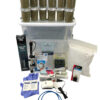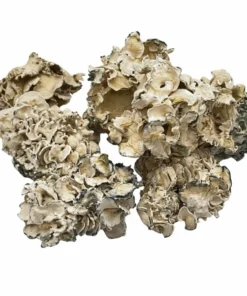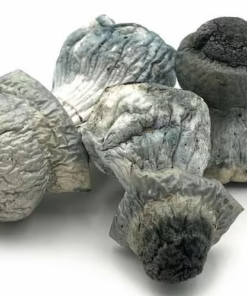Eutylone Crystal: A Comprehensive Overview
Eutylone Crystal, a prominent research chemical, has garnered attention for its unique properties and applications in scientific studies. Known chemically as N-ethylbutylone, this substance belongs to the cathinone class and is often utilized in experimental contexts. In this guide, we delve into the essential details about Eutylone Crystal, its characteristics, applications, and safety considerations. Order now from GREEN SOLUTION SHOP
What is Eutylone Crystal?
Eutylone Crystal is a synthetic stimulant with a molecular structure resembling other cathinones. It is commonly used in laboratory research to study its interactions and effects on biological systems. Due to its structural similarities to substances like MDMA and methylone, Eutylone Crystal is of significant interest in pharmacological and neurochemical research.
Key Features:
- Chemical Name: N-ethylbutylone (Hydrochloride form).
- Chemical Class: Cathinone (beta-keto amphetamines).
- Appearance: Transparent or semi-transparent crystalline form.
- Purity: Typically available at high purity levels for research purposes.
Applications of Eutylone Crystal
Eutylone Crystal is primarily utilized in scientific and forensic settings. Some key applications include:
1. Pharmacological Studies
Researchers investigate Eutylone Crystal to understand its effects on neurotransmitter systems, particularly dopamine, serotonin, and norepinephrine. This aids in exploring the impact of cathinones on mood, cognition, and behavior.
2. Toxicological Analysis
Eutylone Crystal is often examined in toxicology labs to study its metabolic pathways and detect its presence in biological samples. This information is crucial for forensic investigations.
3. Comparative Research
Comparisons with related substances like methylone and ethylone help scientists identify differences in potency, duration, and receptor binding affinity.
Chemical Properties
- Molecular Formula: C13H17NO3
- Molar Mass: 235.28 g/mol
- CAS Number: 802286-83-5
- Melting Point: Typically ranges between 147–150°C
Safety and Precautions
Eutylone Crystal is intended strictly for laboratory and research purposes. It is not approved for human consumption. Researchers must adhere to safety protocols and handle the substance responsibly:
- Personal Protective Equipment (PPE): Always wear gloves, lab coats, and eye protection when handling.
- Storage: Store in a cool, dry place away from direct sunlight and moisture.
- Legal Compliance: Ensure compliance with local and international regulations regarding research chemicals.
- Avoid Ingestion: Direct contact or accidental ingestion must be avoided.
Legal Status
The legal status of Eutylone Crystal varies by country. In many regions, it is classified as a controlled substance or falls under temporary bans pending further evaluation. Researchers must verify its legal status in their jurisdiction before procurement or use.
Why Choose Eutylone Crystal for Research?
- High Purity: Reliable suppliers offer Eutylone Crystal at high purity levels, ensuring accurate results in experiments.
- Versatile Applications: Its diverse applications make it a valuable tool for pharmacological and toxicological studies.
- Well-Documented: Available scientific literature provides a foundation for experimental designs and hypotheses.
Ethical Considerations
As with any research chemical, ethical considerations must guide its use. Researchers are encouraged to:
- Publish findings transparently.
- Avoid promoting misuse or off-label applications.
- Contribute to the scientific community’s understanding of cathinone derivatives responsibly.
Conclusion
Eutylone Crystal stands out as a key substance in the realm of research chemicals. Its unique chemical properties and broad application potential make it an essential component in scientific exploration. By adhering to safety protocols and ethical guidelines, researchers can unlock valuable insights and advance the understanding of synthetic cathinones.
Explore the possibilities of Eutylone Crystal in your research and contribute to groundbreaking discoveries in neurochemistry and toxicology.
| Quantity | 5 grams, 10 grams, 50 grams, 100 grams, 500 grams, 1kg |
|---|













Reviews
There are no reviews yet.